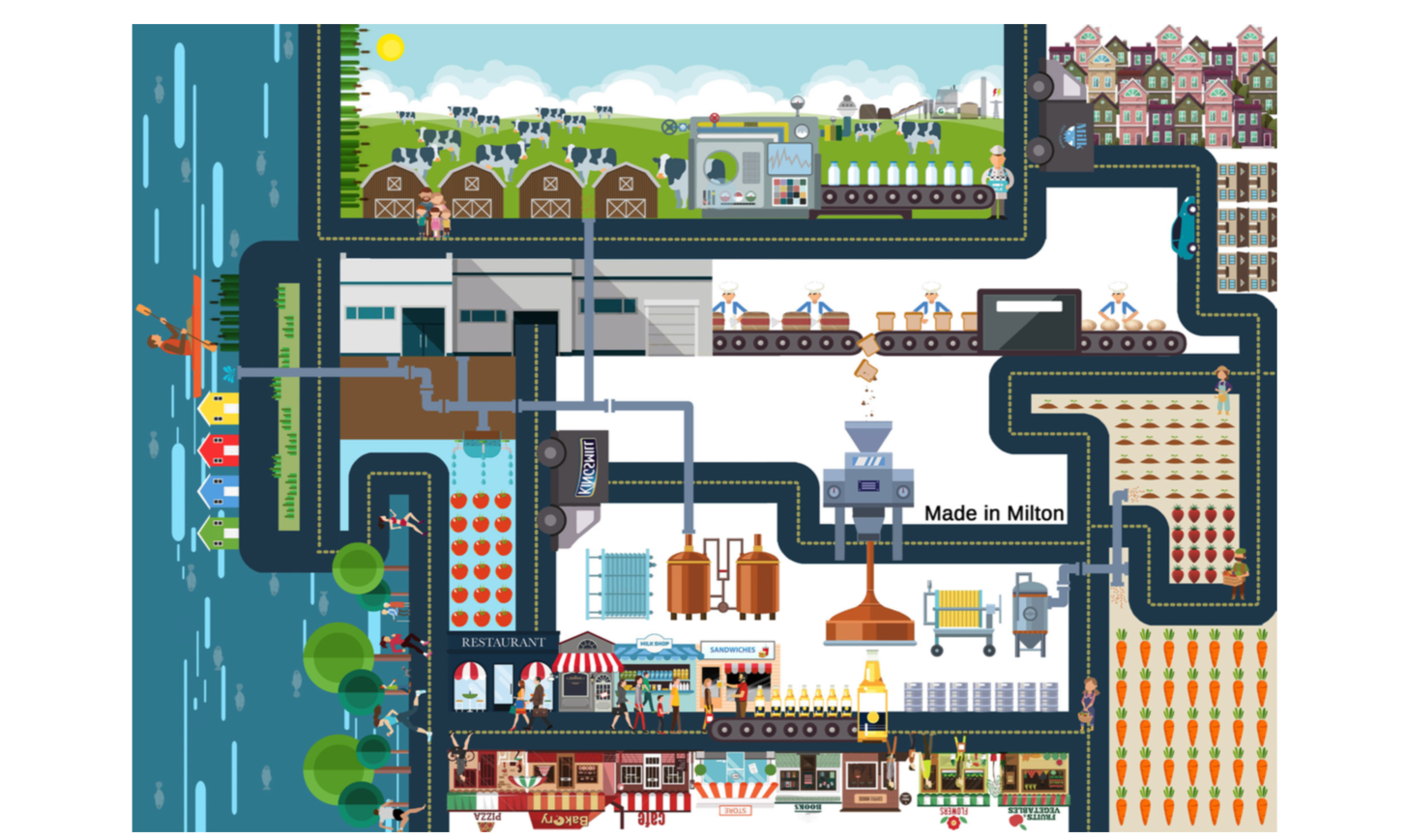Abstract
Milton, a site arose from the late 1940s as part of a post-war construction programme, is today struggling to cope with the growing needs a town as big as Milton requires in every aspect owing to the lack of top down planning policies resulted from the concentric focus on the city development.
This is underscored by the evidence that Milton’s lack of a focal point is the main cause for its disjointed nodal system; and that its low density over a vast amount of derelict land has made public transport link to the area not viable which has further pushed it to the periphery. Meanwhile, Milton’s convoluted road network has effectively fragmented zones such as Balmore Industrial Area.
A thorough understanding on the aforementioned aspects have effectively gauge successes, failures, strengths and weaknesses that create snapshots of information for its 2050 redevelopment plan. From this we have formulated four areas of action where our reimagined Balmore Industrial Area will act as the catalyst and gateway to the community to a new and reinvigorated Milton. The focuses are:
1. To Put Milton on the map by improving and strengthening its existing links to global node through the Forth and Clyde Canal; 2. To open up of Balmore Industrial Area and diversifying land use through Reinstating Liddesdale Road to the urban main road 3. Reducing the development’s environmental impact on site by Reusing industrial by products, which give rise to the following; 4. A sustainable use on derelict land for food production that forms part of an Integrated Green Network.
It is envisioned that through a logical and sustainable network, Milton is to achieve its goal as a self- contained, compact and sustainable town by 2050.
Prepared by
Xun Hern Liaw, Lwin Mar Kyaw
Booklet


